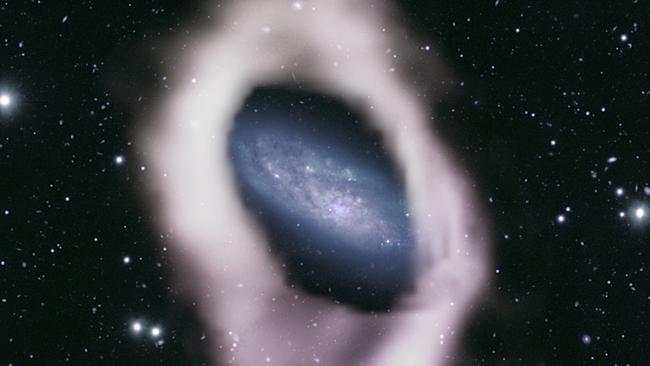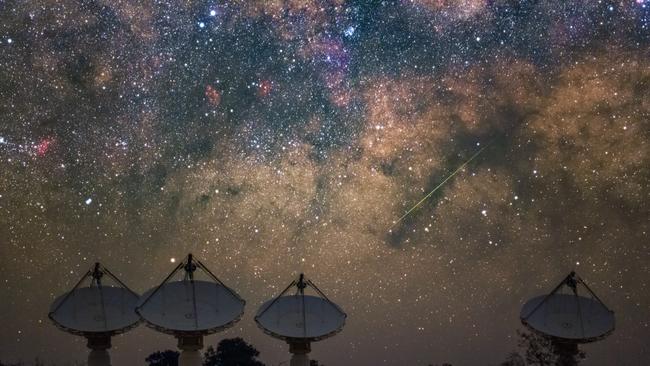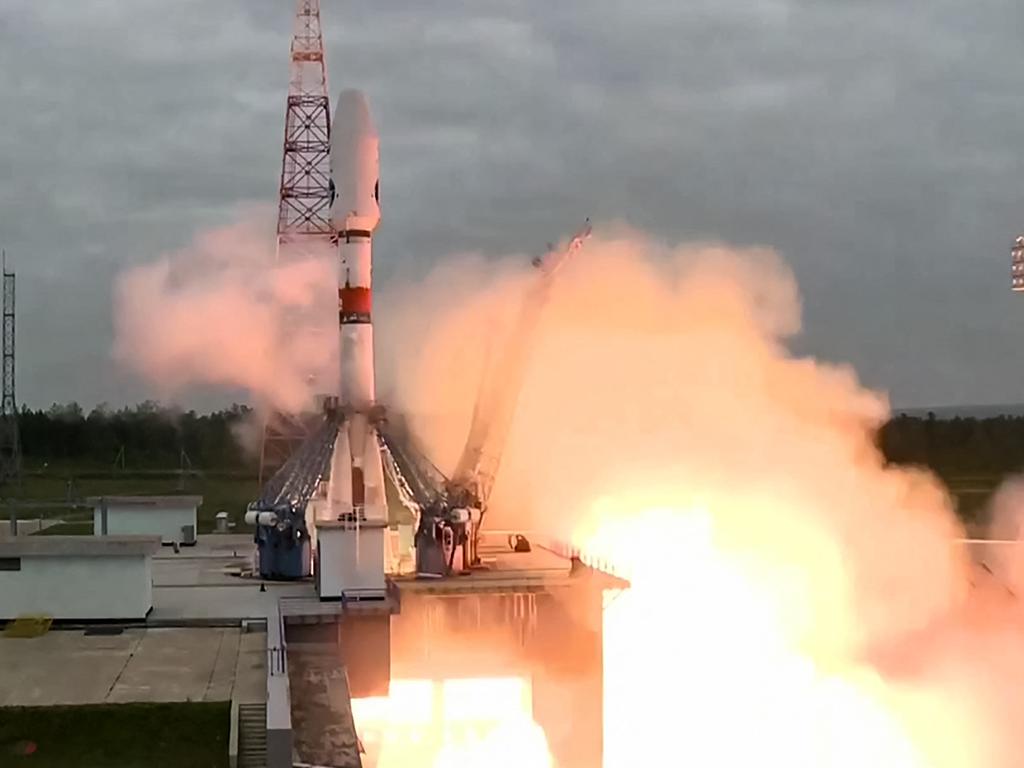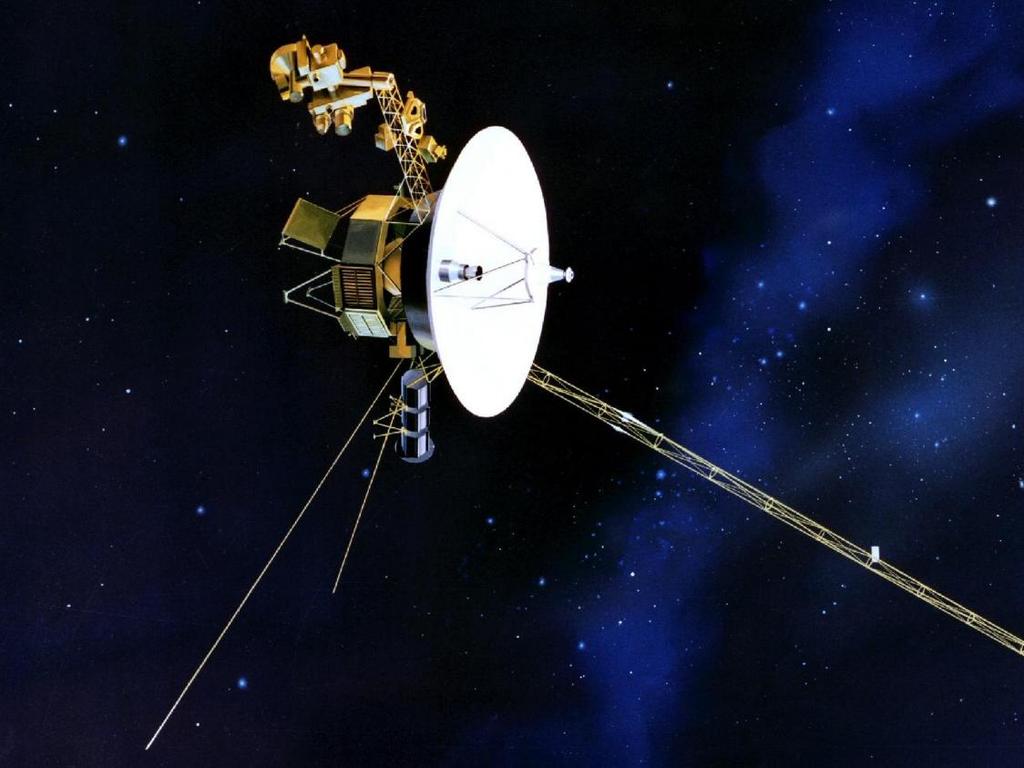Astronomers discover polar ring galaxy held together by ‘dark halo’ and stardust
The galaxy, enclosed by halos of stardust and dark matter, is the first ever polar ring galaxy observed by Australian telescopes.

Astronomers have discovered a cosmic ‘ribbon’ has wrapped itself around a mysterious galaxy 56 million light years from earth, in a revelation expected to lift the lid on the secrets of dark matter and the orbits of mass across the universe.
This spiral galaxy, NGC4632, is orbited by a halo composed of two “polar rings” – formations of gas only observable on the radio wavelength.
The discovery was made using CSIRO’s Australian Square Kilometre Array Pathfinder radio telescope in WA, during a study led by astrophysicist Nathan Deg and astronomer Kristine Spekkens, with CSIRO professor Bärbel Koribalski.
Dr Koribalski said while spiral galaxies like NGC4632 and the Milky Way sit like a flat disk or “dinner plate,” the gas ribbon forms a “sphere or an ellipsoid around it.”

The ring is held in place by a far more massive cluster of dark matter, known as a “dark halo”.
Dark matter is ubiquitous and largely unobservable, lending additional mass to celestial objects beyond the weight accounted for by regular matter, like the hydrogen in these polar rings.
“There’s ten times more mass than we can see … the stars, the gas, the dust, everything added up makes about 10 per cent of the mass that is actually there, the rest being dark matter,” Dr Koribalski said.
“That forms a dark halo, holding this 10 per cent of observable mass in its remarkable shape.”
Simulations show that these polar rings can only form in a goldilocks weight range. The ribbon is almost ten times the size of the galaxy it orbits, but would break apart if it had less mass, and would be impossible to form if too much hydrogen and stardust was attracted.
The study will help researchers show that celestial objects are not simply static formations but are constantly shifting in mass, shape and composition, often pulling elements off from one another, reshaping both bodies in the process.
“Big galaxies always bully the little ones, they will steal gas from the outskirts of the little ones and if they get too close it will completely consume them. This is in fact how galaxies grow,” Dr Koribalski said.
“In the Milky Way Galaxy for example, we know that it quite recently gobbled up the Sagittarius Dwarf Galaxy.”








To join the conversation, please log in. Don't have an account? Register
Join the conversation, you are commenting as Logout